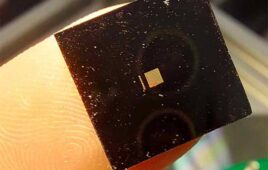R&D executives from Abbott and Boston Scientific explained how their processes work and dispelled some myths about the medtech giants to a standing-room-only crowd at DeviceTalks Minnesota, June 4–5 in St. Paul.
About 75% of what these companies introduce in a 12-to-15-month period will be improvements to existing devices and the rest will be attempts at blockbusters, said Mark Strong, divisional vice president of R&D at Abbott. Devices with game-changing potential require bigger investments and can take three to five years to develop, added Randy Schiestl, vice president of R&D at Boston Scientific.
“The key thing is to have a really active pipeline where you’ve looked at one-to-three- and five-year timelines and you’ve got launches worldwide, every region, every year,” Schiestl said.
Big companies also have the ability to source talent internally for product development teams, particularly across engineering disciplines. Abbott also looks to universities, because recent graduates’ energy and desire to make a name for themselves make them attractive to the company, Strong said.
Acquisitions immediately bring new talent on board, which makes R&D fun, Schiestl added. In the last 10 years, Boston Scientific has been more aggressive in adding talent through acquisitions and through partnerships with universities, third parties, contractors and others. “It’s a much more robust model, much quicker to bring in the right team, and just more dynamic in terms of the resources that are available to the company in terms of partnering,” he added.
Big companies also combine their R&D structure with flexibility. Boston Scientific’s seven businesses use the same product development process, manufacturer infrastructure, innovation initiatives and procedures, and the same control system, but the company is flexible in the types of products that teams can work on, Schiestl said.
Abbott tries to be agile and keeps its product development teams small so it can “turn them loose and let them innovate,” Strong said. The company implements its higher-level controls and safety mechanisms with review boards and late-stage processes, he added.
The public-private Medical Device Innovation Consortium and Jeffrey Shuren’s leadership of the FDA’s Center for Devices and Radiological Health have each boosted collaboration and quality in the industry, both men said.
“The opportunity is to get everybody engaged,” Schiestl said. “Everybody should have this general attitude that they can innovate, that they can bring new ideas to the table.”






Enjoyed the article which was a full circle back to big companies mainly buying tech and along the path acquiring talent. The serious hard work and risk is the micro companies fighting for seed and then Venture Capital with no proof of concept just a dream to make something better or do it totally different.
However as the massive consolidation continues with mega mergers in the Med tech field more foreclosed markets are taking place. This happens because the large companies along with GPOs carve out contracts that typically never see the light of day. Leading to “no one knows the price of a product…” call it rebate or it’s street name Mr Kickback it is the outcome that matters… anti competitive exclusionary practices. Just two weeks ago BD was sued again (fourth tome) for charging high prices. This is aloud to take place because when a market is foreclosed to one vendor prices increase as options dwindle. Thinking supply and demand has a play here in reverse!
In the end these large companies who buy the latest technology have made it next to impossible for new products to make it to the market unless THEY decide to acquire it. The very sad side is for patients because it is not necessarily if a product is really the future best practices and has a great GM it is more how does it play against existing products. Don’t rock the boat is the take away. Ironic Stryker just made a bid of Boston nobody is safe… one more consolidated gatekeeper to better more cost effective care.
Good to know if you want to chase your dream. Ensure this risk disclosure is in the B plan.